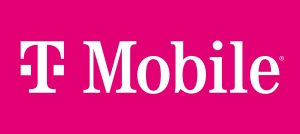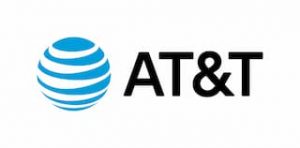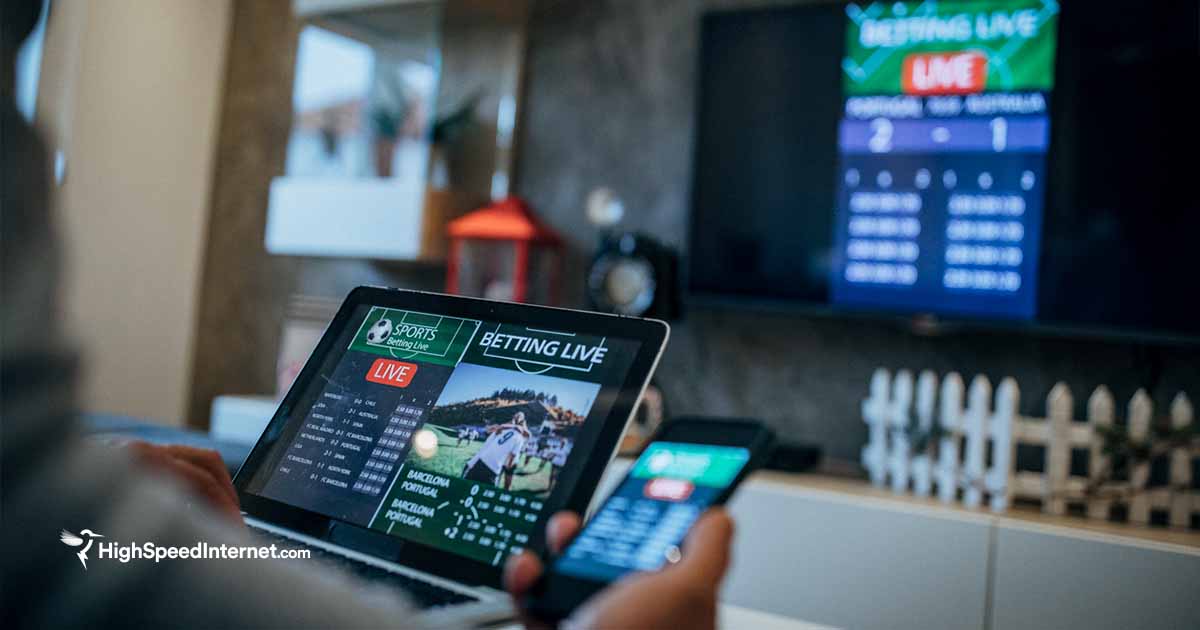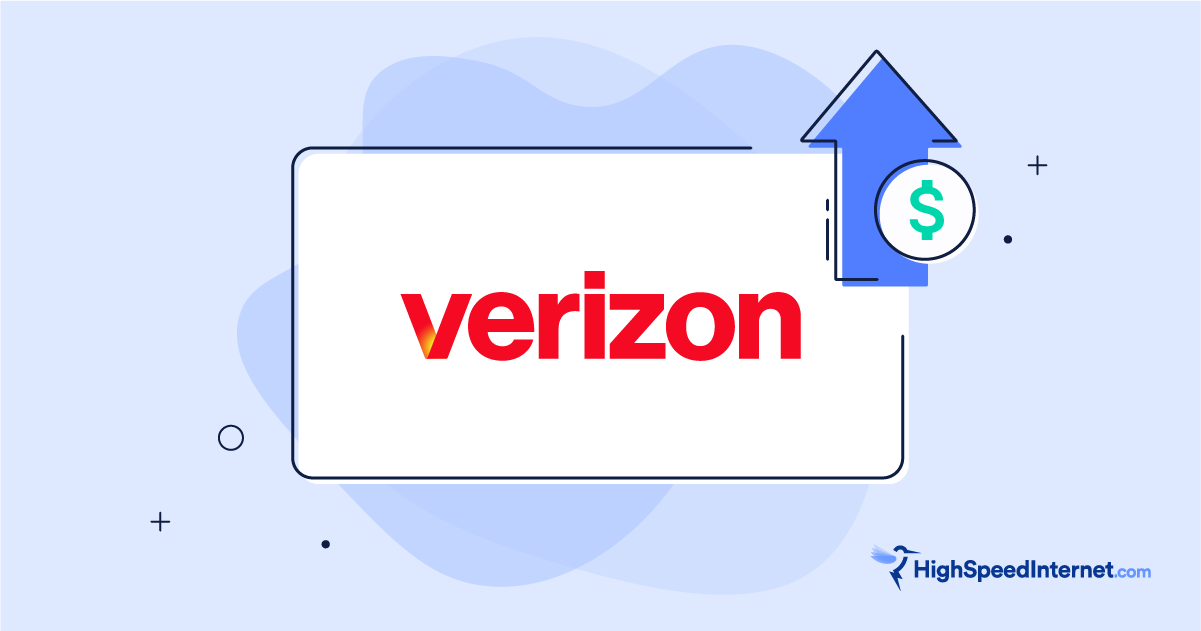Best Hotspot Data Plans of 2026
All-in-one smartphone plans are your best bet for hotspot data
Jul 30, 2025 | Share
Brand Guides
-
Best hotspot data plan of 2026
 T-Mobile Experience Beyond
T-Mobile Experience Beyond- $100.00/mo.*
- 250GB of high-speed hotspot data per month
- Biggest 5G network
- Highest monthly price
-
Best for reliabilityVerizon Unlimited Ultimate
- $90.00/mo.†
- 200GB of high-speed hotspot data per month
- Excellent reliability in rural and urban areas
- 5G Ultra Wideband service not available everywhere
-
Best for broad coverage
 AT&T Unlimited Premium PL
AT&T Unlimited Premium PL- $85.99/mo.‡
- 60GB of high-speed hotspot data
- Best 4G LTE coverage in rural areas
- Smallest 5G network
Data as of 05/06/2025. Availability and speed may vary by location, and prices are subject to change. See disclaimers.
Having the right hotspot data plan means you can connect to the internet from anywhere you can get a cell phone signal. But which plan should you choose, and how much should you pay?
In 2026, you’ll get the most hotspot data from all-in-one mobile plans offering unlimited talk, text, and a certain amount of high-speed mobile data. The most generous hotspot data plans come from the big three mobile providers.
Our guide covers the best phone plans for hotspot data, the best prepaid options, and the best data-only plans for standalone hotspots. That last one’s a close call, though, so we list all the top data-only plans so you can choose.
Our top pick: Which hotspot plan is best?
The amount of hotspot data you can get with an everyday phone plan has been shooting through the roof lately. Now, you can get enough data from any big mobile phone provider for gaming, working remotely, or streaming Disney+ to a van full of kiddos on a road trip.
You can get good hotspot data plans that cost less than $100 per month from any top-tier provider. But among the big three, T-Mobile is the clear winner. With the new Experience More plan, you get a whopping 250GB of hotspot data on top of your regular mobile data every month. All that data is powered by T-Mobile’s 5G network, which is bigger and faster than anything the competition offers.
That said, T-Mobile isn’t the only game in town. You might get more reliability from Verizon, better rural coverage from AT&T, and much lower prices from Visible.
In this roundup:
Seven best hotspot data plans | How we chose | Best overall | Best for reliability | Best for broad coverage | Best for budgets | Best for international travelers | Best prepaid hotspot plan | Best standalone hotspot plan | Compare hotspot data plans | My take | FAQ
In this roundup:
The seven best mobile hotspot data plans
- Best overall: T-Mobile Experience More
- Best for reliability: Verizon Unlimited Ultimate
- Best for broad coverage: AT&T Unlimited Premium PL
- Best budget pick: Visible+ Pro
- Best for international travelers: T-Mobile Experience Beyond
- Best prepaid hotspot plan: AT&T 12 Month Unlimited w/Mobile Hotspot
- Best plan for a standalone hotspot device: T-Mobile $30/mo. (10GB)
Compare the best mobile hotspot plans
| Plan name | Best for | Price | Hotspot data |
|---|---|---|---|
| T-Mobile Experience Beyond | Overall satisfaction | $100.00/mo.* | 250GB |
| Verizon Unlimited Ultimate | Reliability | $90.00/mo.† | 200GB |
| AT&T Unlimited Premium PL | Coverage | $85.99/mo.‡ | 60GB |
| Visible+ Pro | Price | $40.00/mo. | Unlimited at 15Mbps speeds |
| T-Mobile Experience Beyond | International travel | $100.00/mo. | 250GB |
| AT&T 12 Month Unlimited w/Mobile Hotspot | Prepaid | $25.00/mo. ($300 required upfront) | 10GB |
| T-Mobile $30/mo. | Standalone hotspots | $90.00/mo. ($10/5GB add-ons available) | 10GB |
Data as of 05/06/2025. Availability and speed may vary by location, and prices are subject to change. See disclaimers.
Shopping for internet and mobile bundles?
You can save big by choosing internet and mobile plans from the same provider. Enter your zip code to shop and compare.You can save big by choosing internet and mobile plans from the same provider. Enter your zip code to shop and compare.
How we compared hotspot data plans
When comparing hotspot plans, the most important factors are price, how much data you get, and the quality of the network wherever you’re headed. This year, we’ve updated our recommendations to focus on mobile phone plans that offer talk, text, mobile data, and hotspot data in one. You’ll pay higher prices for these than you might for standalone hotspot plans, but the benefits are clear.
Special circumstances might mean different choices, though, so we’ve added in recommendations for international travel, prepaid plans, and data-only plans for hotspot devices.
If you’re unsure where to start, read our step-by-step guide on how to choose the best hotspot data plan for your situation.
Best overall—T-Mobile Experience More
- Hotspot data: 60GB/mo.
- Biggest U.S. 5G network
- Equipment required: T-Mobile smartphone
Data as of 05/06/2025. Availability and speed may vary by location, and prices are subject to change. See disclaimers.
T-Mobile offers a true goldilocks solution for hotspot data with its Experience Beyond plan. You get tons of hotspot data, all on the biggest and fastest 5G network in the U.S. If you run out, your tethered device will be limited to 3G speeds (about 2Mbps).
Separately from the hotspot data, the Experience Beyond plan comes with unlimited calling, texting, and high-speed mobile data. That means you can stream or game to your heart’s content on your smartphone while still having enough data to tether a laptop, camera, or tablet for work.
This plan is a reliable, all-in-one solution for staying connected and entertained on the go. If you act fast, you can take advantage of T-Mobile’s five-year price guarantee.
 Pros:
Pros:
- Excellent network coverage
- Fair pricing for talk, text, mobile, and hotspot data
 Cons:
Cons:
- More hotspot data than most people need
- High price
Best for reliability—Verizon Unlimited Ultimate
- Hotspot data: 200GB/mo.
- Most reliable 5G network
- Equipment required: Verizon smartphone
Data as of 05/06/2025. Availability and speed may vary by location, and prices are subject to change. See disclaimers.
If you’re willing to spend a little more every month, consider Verizon’s Unlimited Ultimate plan. You get plenty of hotspot data for working all day and playing all night, and it’s delivered over a network with an industry-best reputation for reliability (whether you’re in a city, suburb, or farther out). If you happen to run out of hotspot data, your tethered device will be slowed to 6Mbps.
Like our other recommendations, the Verizon plan includes unlimited calling, texting, high-speed data, and international roaming. If it’s available, you can tap into Verizon’s super speedy 5G UW (Ultra Wideband) network and enhanced video calling service.
If you’ll be on the road more than half the time and plan to use your Verizon line as the only way to connect to the internet, this plan is your best bet.
 Pros:
Pros:
- Most-reliable network coverage
- Most high-speed hotspot data for the price
 Cons:
Cons:
- More hotspot data than most people need
- 5G UW not available everywhere
Best for broad coverage—AT&T Unlimited Premium PL

$85.99/mo.‡
- Hotspot data: 60GB/mo.
- Biggest 4G LTE network
- Equipment required: AT&T smartphone
Data as of 05/06/2025. Availability and speed may vary by location, and prices are subject to change. See disclaimers.
AT&T’s Unlimited Premium PL smartphone plan comes with a medium-sized bucket of hotspot data for a relatively high price, but you get the broadest 4G coverage in the U.S. That means even if you’re way out in the sticks, you’re likely to get at least a few bars. That data may be slow, but it’s a lot better than being stranded with a phone, a laptop, and no way to connect.
AT&T’s plan has enough hotspot data to tether a work laptop for a few hours a day throughout the month (or about a week if you’re clocking eight hours a day). After work or school, you can use the unlimited data on your smartphone for streaming, gaming, and staying in touch with family and friends.
If you spend less than half your workdays on the road but travel to rural areas often, we think you’ll be happy with this plan.
 Pros:
Pros:
- Broadest 4G network coverage
- Enough hotspot data for part-time remote work
 Cons:
Cons:
- Smallest 5G network
- Slower hotspot speeds
Best budget pick—Visible+ Pro
- Hotspot data: Unlimited at 15Mbps speeds
- Piggybacks on Verizon’s network
- Equipment required: Visible-enabled smartphone
Data as of 05/06/2025. Availability and speed may vary by location, and prices are subject to change. See disclaimers.
Visible charges about half as much as our other top picks, and you benefit from truly unlimited hotspot data. However, there’s a big downside: You’re limited to 15Mbps speeds on that tethered device. Furthermore, you’re guaranteed that 15Mbps clip on only one device at a time. That means you could potentially tether more devices to your smartphone’s hotspot, but their speeds will be even slower than on your first tethered device.
To be fair, you can do a lot with 15Mbps of download speed. It should work well to stream in standard definition, browse the internet, and check emails. It won’t be great for gaming or video calls, though, and managing big files could take all day.
If you’re on a budget but need a reliable hotspot connection, Visible+ Pro is a decent pick. It’s not going to win the Indy 500 of hotspot Wi-Fi, but it won’t leave you stranded, either. Plus, you get to piggyback on Verizon’s reliable 5G network without paying Verizon’s premium prices.
 Pros:
Pros:
- Broadest 4G LTE coverage
- Enough hotspot data for part-time remote work
 Cons:
Cons:
- Smallest 5G network
- Slower hotspot speeds
Best for international travelers—T-Mobile Experience Beyond
- Hotspot data: 250GB/mo.
- 30GB/mo. of high-speed data in Canada & Mexico
- 15GB/mo. of high-speed data in 215+ other countries
- Equipment required: T-Mobile smartphone
Data as of 05/06/2025. Availability and speed may vary by location, and prices are subject to change. See disclaimers.
T-Mobile’s premium smartphone plan comes with even more data than Verizon’s plan, and you get mobile data in more than 215 countries. This plan is the most expensive one we recommend, but it’s the best way for globe-trotters to stay connected at all times.
In addition to 250GB of domestic hotspot data per month, this plan includes 30GB of mobile in Canada and Mexico and 15GB of mobile data in other countries every month. It’s enough to guarantee connection for the first several days of any trip abroad, and it means you don’t have to worry about finding a local SIM or eSIM the moment you land.
 Pros:
Pros:
- Broadest 4G network coverage
- Enough hotspot data for part-time remote work
 Cons:
Cons:
- Smallest 5G network
- Slower hotspot speeds
Compare for yourself!
While T-Mobile’s Experience Beyond plan is my top hotspot pick for world travelers, it wasn’t an easy choice. If you’re all-in on Verizon for its reliability, you can enjoy 15GB of high-speed data in more than 210 countries and buy data top-ups if you need more. With AT&T, you get Unlimited talk, text, and high-speed data in 20 Latin American countries.
Enter your home zip to shop and compare.
Best prepaid hotspot plan—AT&T 12 Month Unlimited w/ Mobile Hotspot

$25.00/mo.||
($300 per year, required upfront)
- Hotspot data: 20GB/mo.
- Biggest 4G network
- Equipment required: AT&T smartphone
Data as of 05/06/2025. Availability and speed may vary by location, and prices are subject to change.
If you’re on a budget and don’t have time for a credit check or monthly bill, look to AT&T’s prepaid plans. You get 20GB of hotspot data, which is enough for occasional use when you can’t get on a regular Wi-Fi connection. Plus, you get unlimited calling, texting, and 16GB of high-speed data on your handset.
This isn’t a premium offering—there’s no other way to slice it. But it’s a good fit for people who want a little hotspot data but aren’t planning to tether regularly.
 Pros:
Pros:
- No credit check required
- No monthly bill
 Cons:
Cons:
- Smallest 5G network
- Too little hotspot data for full-time use
Best plan for a standalone hotspot device—T-Mobile $30/mo. (10GB)
- Hotspot data: 10GB/mo.
- Biggest 5G network plus Canada, Mexico, and 215+ countries
- Equipment required: T-Mobile standalone hotspot
Data as of 05/06/2025. Availability and speed may vary by location, and prices are subject to change.
We no longer recommend data-only hotspot plans for most folks because you can get more data and flexibility with all-in-one smartphone plans that include calling and texting. However, standalone hotspot devices can be great if you need to connect multiple devices and don’t want to eat through your smartphone’s battery.
Data-only hotspot plans are inexpensive compared to mobile plans, so they can be a good budget choice if you already have a hotspot device you love. Most devices only work on one network, so shop for hotspot plans on that network.
If you’re buying a new hotspot device and a plan at the same time, go with T-Mobile’s $30/mo. Plan and its MiFi® X PRO 5G hotspot device. That way, you’ll have enough data to power a handful of devices for a short time, and you can buy data top-ups as needed. You’ll benefit from T-Mobile’s unparalleled 5G speeds in the U.S., plus you’ll get up to 5GB of hotspot data in Canada and Mexico and another 5GB of hotspot data in more than 215 other countries.
 Pros:
Pros:
- Lower price than smartphone hotspot plans
- Connectivity for multiple devices
 Cons:
Cons:
- Only 10GB hotspot data
Comparing data-only plans for hotspot devices
You can pay just a little for a hotspot plan with a tiny amount of data or pay $80–$100 for enough data for about a week of intensive use. Here’s a look at plans and prices from the biggest providers.
| Plan | Price | High-speed hotspot data | Shop now |
|---|---|---|---|
| T-Mobile $20/mo. | $20.00/mo. | 5GB | View Plans for T-Mobile |
| T-Mobile$30/mo. | $30.00/mo. | 10GB | |
| T-Mobile $10/mo. | $10.00/mo. | 2GB | View Plans for T-Mobile |
| AT&T Prepaid data 20GB | $300.00/yr. | 20GB | |
| AT&T Prepaid data 15GB | $35.00/mo. | 15GB | |
| AT&T Prepaid data 50GB | $55.00mo. | 50GB | |
| AT&T Prepaid data 100GB | $90.00/mo. | 100GB | |
| Verizon Premium | $80.00/mo. | 150GB | |
| Verizon Pro | $60.00/mo. | 100GB | |
| Verizon Plus | $40.00/mo. | 50GB | |
| Verizon Essential | $20.00/mo. | 15GB |
Data as of 05/06/2025. Availability and speed may vary by location, and prices are subject to change.
Find the best mobile service near you
Enter your zip to compare perks and options side by side.
My take: Just use your smartphone
Standalone hotspot devices aren’t as cool as they once were or as common. Instead of buying a hotspot puck and a separate data plan, just use your smartphone to connect tablets, hotspots, or smart cameras to the internet when you’re out of reach of traditional Wi-Fi. If you use the personal hotspot feature often, look for a premium plan with at least 60GB of hotspot data for prices starting at about $85 per month.
For the money, you can expect access to 5G data for your hotspot whenever it’s available. You should also expect unlimited mobile data on your primary smartphone plus unlimited talk, text, and perks. I crunched the numbers and talked to real customers, and I think T-Mobile’s Experience More will give you the most bang for your buck. If you travel internationally, though, upgrade to the Experience Beyond plan for an extra $15 per month.
T-Mobile’s also my top pick for standalone hotspot plans, but AT&T’s prepaid plans are better if you’re on a budget and don’t want to bother with monthly payments.
FAQ about hotspot data plans
Can you get a truly unlimited hotspot plan?
Which mobile carrier has an unlimited hotspot plan?
Disclaimers
*T-Mobile
for 1 phone line + taxes and fees. AutoPay discount using an eligible payment method applied.
† Verizon
With paper-free billing and Auto Pay. Plus taxes & fees.
‡ AT&T
5G coverage not available everywhere. Requires compatible device/service. Other terms and restr’s apply. Data charges may apply.
§ Visible
Taxes and fees included. Welcome discount applied.
|| AT&T Prepaid
When you prepay $300 for 12 months of service. After 16GB, speeds slowed to max 1.5Mbps for the month. Req’s new single line and $300 prepayment. Taxes & fees extra.
Author - Chili Palmer
Chili Palmer covers home tech services, with a special focus on understanding what families need and how they can stay connected on a budget. She handles internet access and affordability, breaking news, mobile services, and consumer trends. Chili’s work as a writer, reporter, and editor has appeared in publications including Telecompetitor, Utah Business, Idaho Business Review, Benton Institute for Broadband & Society, and Switchful.com.
Editor - Jessica Brooksby
Jessica loves bringing her passion for the written word and her love of tech into one space at HighSpeedInternet.com. She works with the team’s writers to revise strong, user-focused content so every reader can find the tech that works for them. Jessica has a bachelor’s degree in English from Utah Valley University and seven years of creative and editorial experience. Outside of work, she spends her time gaming, reading, painting, and buying an excessive amount of Legend of Zelda merchandise.




